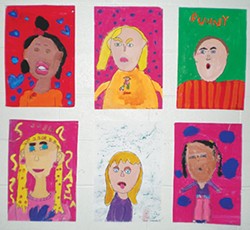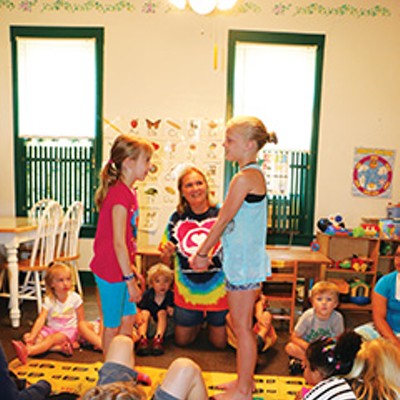Teaching kids about race
What parents need to know
[
{
"name": "Air - MedRect Combo - Inline Content 1",
"component": "11490391",
"insertPoint": "3",
"requiredCountToDisplay": "1",
"parentWrapperClass": "fdn-ads-inline-content-block"
},{
"name": "Air - MedRect Combo - Inline Content 2",
"component": "11490392",
"insertPoint": "7",
"requiredCountToDisplay": "5",
"parentWrapperClass": "fdn-ads-inline-content-block"
},{
"name": "Air - MedRect Combo - Inline Content 3",
"component": "11490393",
"insertPoint": "12",
"requiredCountToDisplay": "9",
"parentWrapperClass": "fdn-ads-inline-content-block"
}
]
There is no escape from the racial conflicts with which children must cope...avoiding the problem isn’t helpful. Too much parental protection from life’s realities may hamper a child’s later ability to cope with life as it is. –Alvin Poussaint, M.D
For 22 years I have worked in the public school system with students and families. As a guidance dean I can sum up my job as “dealing with the myriad issues students bring to school.” My office is a safe space where mediation happens. Since so much of my job depends on listening to student and parent concerns, I am jokingly called “The Adolescent Whisperer,” a title I take seriously.
When you combine that with my being a woman raised in a mixed-race home who identifies as black, you add another layer to my role as a trusted adult. Students are talking about race and, with multiple social media accounts, they know what’s happening in the world far more than previous generations did.
I am not so much an expert on teaching race and diversity as I am a social activist who uses that platform within the structure of a school. Yet in my work I am constantly asked about how to facilitate such important conversations.
First, I can tell you the pitfalls and mistakes that require correction. Telling children that you “don’t see race” or that it’s best to be “colorblind” is a huge mistake because our country was actually built on “othering” people because of their color/culture. Attempting to ignore race has, over time, become a way for people to distance themselves from the time when we enslaved kidnapped Africans or insisted on assimilation of the Irish or Italians who were marginalized for their culture. As much as we liked pointing a finger toward South Africa from the late 1940s to the 1990s, it is important to recognize that America also has been engaged in apartheid.
For black parents, it’s nearly impossible not to have “the talk” about what race means in this country. Since Trayvon Martin became a part of American consciousness, that discussion has gained traction, but not without controversy. Since that time, we’ve had Michael Brown, Tamir Rice, and nine black adults murdered in a church in Charleston in June. This conversation isn’t going away.
Here are some points to remember about having the conversation with your children about multiculturalism and systemic racism.
1. When is the best time for these conversations? Developmentally speaking, children between the ages of five and eight are thinking about social issues, placing value judgments on things, and are able to experience exclusion. Children know what it means to “other” people. To “other” means taking any action by which a person or group becomes classified as “not one of us.” When we solely describe another person by their skin color or eye shape, they pick up on how to do that. They have a self-awareness by this age and wouldn’t point to a group and say, “The brown man over there.” The desired behavior is but to suggest the color of his shirt or that he’s holding an umbrella or some other characteristic not dependent on skin color. This age isn’t too young to discuss cultural differences but neither is it too young to accidentally teach them things you don’t want them to learn.
2. Without intention, children can easily not be exposed to diversity. There is so much insulation that occurs naturally that parents, in raising their children, can find themselves in accidentally homogeneous spaces. When you sign your children up for sports, is the team diverse? If not, what are the other options? Being anti-racist means making deliberate choices in raising deliberate children who are able to monitor their lives and the injustices that the civil rights movement sought to eradicate. Creating socially aware children doesn’t happen by hoping that the world sees you as anti-racist.
3. Let kids do the talking. I can tell you from experience that they already are talking. Kids are paying attention and discussing race with friends, sometimes in a place that isn’t safe. They’re learning from their peers what it means to be a racist but they’re also learning what it means to be an ally. Teens, especially, work from an evolving set of beliefs and this is a complex and challenging age. They respond to the social contexts of historical acts, so asking them about their sense of justice and fairness can elicit some deeper conversations that they’ll lead if we let them.
4. Watch out for “microagressions.” Comedian Margaret Cho once mentioned that “Living in America as a minority feels like dying of a thousand paper cuts.” It’s not the overt racism that many of us experience. It’s comments like, “Dreadlocks aren’t a professional hairstyle,” which affect the social status of our views. For a black male, this is a perfectly acceptable way to style his hair, but making this sort of statement is covertly racist and considered a microagression – a small way in which to build belief systems out of our comments. Microaggressions are borne from implicit bias and kids pick up on that and then repeat what parents say absent of the context. We’re putting our kids in precarious positions to explain a meaning that they’re not prepared to explain.
5. Finally, talking about race doesn’t make you a racist. We can, as parents, examine our own bias and prejudices without falling victim to defeat. Pointing out that members of cultures and races have suffered due to discrimination and inequality simply helps us as parents direct the values of our children. We can celebrate black and Asian and Hispanic heroes and still focus on our common humanity. Absent of race, we teach our children that racism exists in a vacuum that simply isn’t a truth of experience. We can talk about race as a thing that exists, and point out the systems and groups that benefit from race, without promoting it as a value.
As parents, we don’t have all the answers for the tough questions our children ask. We don’t give ourselves permission to figure things out and can default to “because I said so,” which doesn’t give a balanced response. Parents can’t wait to be experts on issues of race and diversity with our children; we are probably at our best when we admit this is a learning process. When we do that, our children are free to ask us the difficult questions because we have shown them our own willingness to learn. This way we can educate and shape values in a healthy way that promotes diversity.
Kelly Wickham is a tech magnet middle school guidance dean with Springfield Public Schools District 186. Kelly is a fierce advocate for social justice and also writes about race and education at her own blog, Mocha Momma. She is a team member of SCoDR, the Springfield Coalition on Dismantling Racism. She is the mother of four grown children.
For 22 years I have worked in the public school system with students and families. As a guidance dean I can sum up my job as “dealing with the myriad issues students bring to school.” My office is a safe space where mediation happens. Since so much of my job depends on listening to student and parent concerns, I am jokingly called “The Adolescent Whisperer,” a title I take seriously.
When you combine that with my being a woman raised in a mixed-race home who identifies as black, you add another layer to my role as a trusted adult. Students are talking about race and, with multiple social media accounts, they know what’s happening in the world far more than previous generations did.
I am not so much an expert on teaching race and diversity as I am a social activist who uses that platform within the structure of a school. Yet in my work I am constantly asked about how to facilitate such important conversations.
First, I can tell you the pitfalls and mistakes that require correction. Telling children that you “don’t see race” or that it’s best to be “colorblind” is a huge mistake because our country was actually built on “othering” people because of their color/culture. Attempting to ignore race has, over time, become a way for people to distance themselves from the time when we enslaved kidnapped Africans or insisted on assimilation of the Irish or Italians who were marginalized for their culture. As much as we liked pointing a finger toward South Africa from the late 1940s to the 1990s, it is important to recognize that America also has been engaged in apartheid.
For black parents, it’s nearly impossible not to have “the talk” about what race means in this country. Since Trayvon Martin became a part of American consciousness, that discussion has gained traction, but not without controversy. Since that time, we’ve had Michael Brown, Tamir Rice, and nine black adults murdered in a church in Charleston in June. This conversation isn’t going away.
Here are some points to remember about having the conversation with your children about multiculturalism and systemic racism.
1. When is the best time for these conversations? Developmentally speaking, children between the ages of five and eight are thinking about social issues, placing value judgments on things, and are able to experience exclusion. Children know what it means to “other” people. To “other” means taking any action by which a person or group becomes classified as “not one of us.” When we solely describe another person by their skin color or eye shape, they pick up on how to do that. They have a self-awareness by this age and wouldn’t point to a group and say, “The brown man over there.” The desired behavior is but to suggest the color of his shirt or that he’s holding an umbrella or some other characteristic not dependent on skin color. This age isn’t too young to discuss cultural differences but neither is it too young to accidentally teach them things you don’t want them to learn.
2. Without intention, children can easily not be exposed to diversity. There is so much insulation that occurs naturally that parents, in raising their children, can find themselves in accidentally homogeneous spaces. When you sign your children up for sports, is the team diverse? If not, what are the other options? Being anti-racist means making deliberate choices in raising deliberate children who are able to monitor their lives and the injustices that the civil rights movement sought to eradicate. Creating socially aware children doesn’t happen by hoping that the world sees you as anti-racist.
3. Let kids do the talking. I can tell you from experience that they already are talking. Kids are paying attention and discussing race with friends, sometimes in a place that isn’t safe. They’re learning from their peers what it means to be a racist but they’re also learning what it means to be an ally. Teens, especially, work from an evolving set of beliefs and this is a complex and challenging age. They respond to the social contexts of historical acts, so asking them about their sense of justice and fairness can elicit some deeper conversations that they’ll lead if we let them.
4. Watch out for “microagressions.” Comedian Margaret Cho once mentioned that “Living in America as a minority feels like dying of a thousand paper cuts.” It’s not the overt racism that many of us experience. It’s comments like, “Dreadlocks aren’t a professional hairstyle,” which affect the social status of our views. For a black male, this is a perfectly acceptable way to style his hair, but making this sort of statement is covertly racist and considered a microagression – a small way in which to build belief systems out of our comments. Microaggressions are borne from implicit bias and kids pick up on that and then repeat what parents say absent of the context. We’re putting our kids in precarious positions to explain a meaning that they’re not prepared to explain.
5. Finally, talking about race doesn’t make you a racist. We can, as parents, examine our own bias and prejudices without falling victim to defeat. Pointing out that members of cultures and races have suffered due to discrimination and inequality simply helps us as parents direct the values of our children. We can celebrate black and Asian and Hispanic heroes and still focus on our common humanity. Absent of race, we teach our children that racism exists in a vacuum that simply isn’t a truth of experience. We can talk about race as a thing that exists, and point out the systems and groups that benefit from race, without promoting it as a value.
As parents, we don’t have all the answers for the tough questions our children ask. We don’t give ourselves permission to figure things out and can default to “because I said so,” which doesn’t give a balanced response. Parents can’t wait to be experts on issues of race and diversity with our children; we are probably at our best when we admit this is a learning process. When we do that, our children are free to ask us the difficult questions because we have shown them our own willingness to learn. This way we can educate and shape values in a healthy way that promotes diversity.
Kelly Wickham is a tech magnet middle school guidance dean with Springfield Public Schools District 186. Kelly is a fierce advocate for social justice and also writes about race and education at her own blog, Mocha Momma. She is a team member of SCoDR, the Springfield Coalition on Dismantling Racism. She is the mother of four grown children.
Illinois Times has provided readers with independent journalism for almost 50 years, from news and politics to arts and culture.
Your support will help cover the costs of editorial content published each week. Without local news organizations, we would be less informed about the issues that affect our community..
Got something to say?
Send a letter to the editor and we'll publish your feedback in print!



















